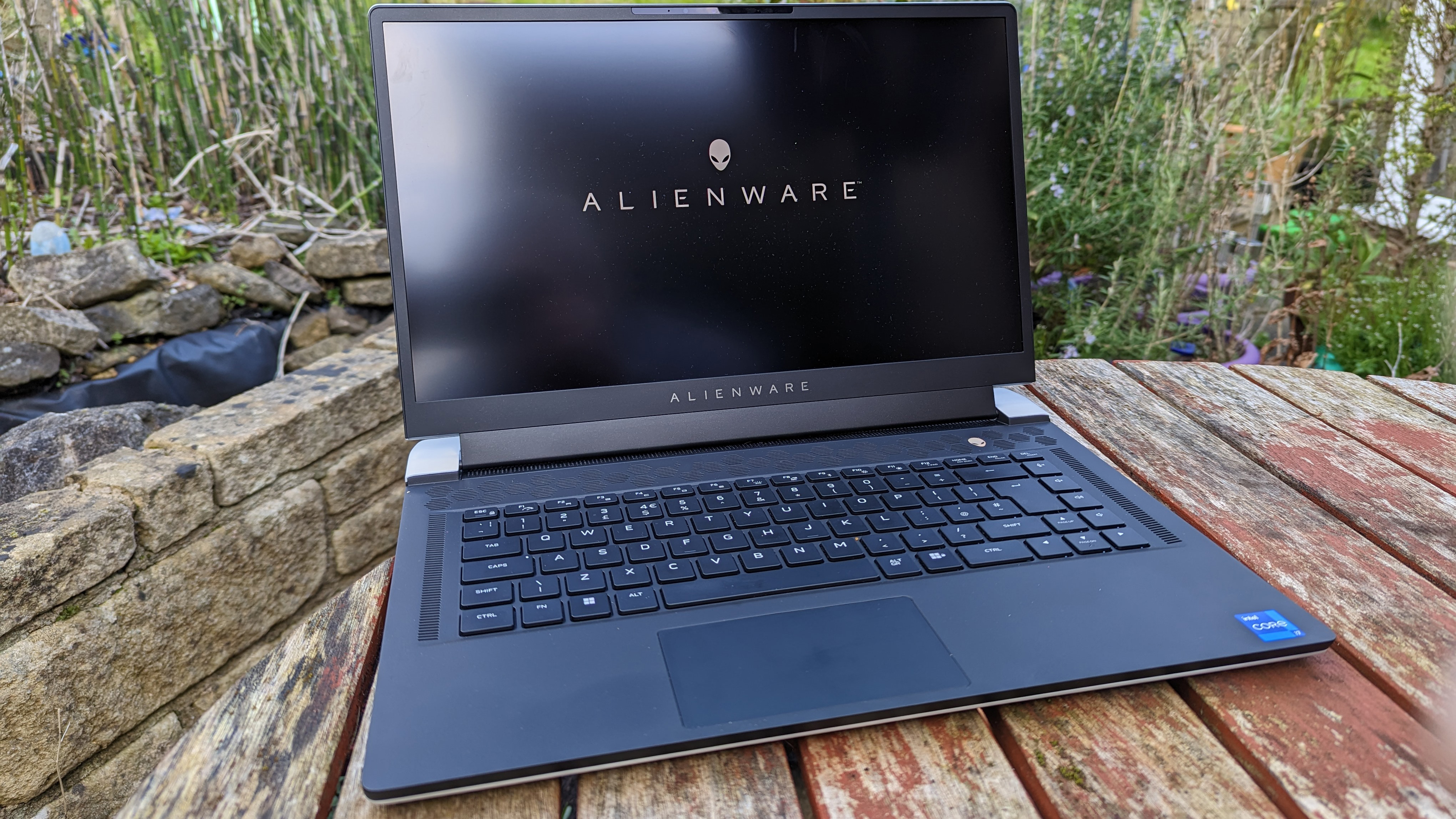
CPU: Intel Core i7 12700H
RAM: 32GB DDR5
GPU: Nvidia GeForce RTX 3080Ti
Storage: 1TB SSD
Screen: 15.6in 1080p 165Hz
OS: Windows 11 Pro
Connectivity: 1x USB 3.2 Gen 1 Type A, 1x USB 3.2 Gen 2 Type-C with DisplayPort and Power Delivery, 1 Thunderbolt 4 port with DisplayPort and Power Delivery, 1x audio jack, 1x HDMI 2.1, 1x Micro SD card reader
Wireless: Wi-Fi 6E, Bluetooth
Dimensions: 15.90 x 359.70 x 277.33 mm
Weight: 2.27 kg
Dell’s thinnest gaming laptop from the Alienware sub-brand, the Alienware X15 R2 is a slender but dense slab of metal and plastic built around a 15-inch, 1080p screen that’s not touch sensitive.
Inside, there's a selection of precisely the sort of components you’d expect from a modern gaming laptop – a powerful CPU, plenty of RAM and fast storage, backed up by a graphics chip capable of generating high-res, ray-traced images as well as plenty of heat.
Less heavy than some machines we’ve reviewed, but no lightweight either, the X15 R2 is a good-looking, versatile choice that would be as at home in a studio as it would in a teenager’s bedroom, but unfortunately sits in a competitive sector of the market where other similarly specced gaming laptops may edge it out on price.
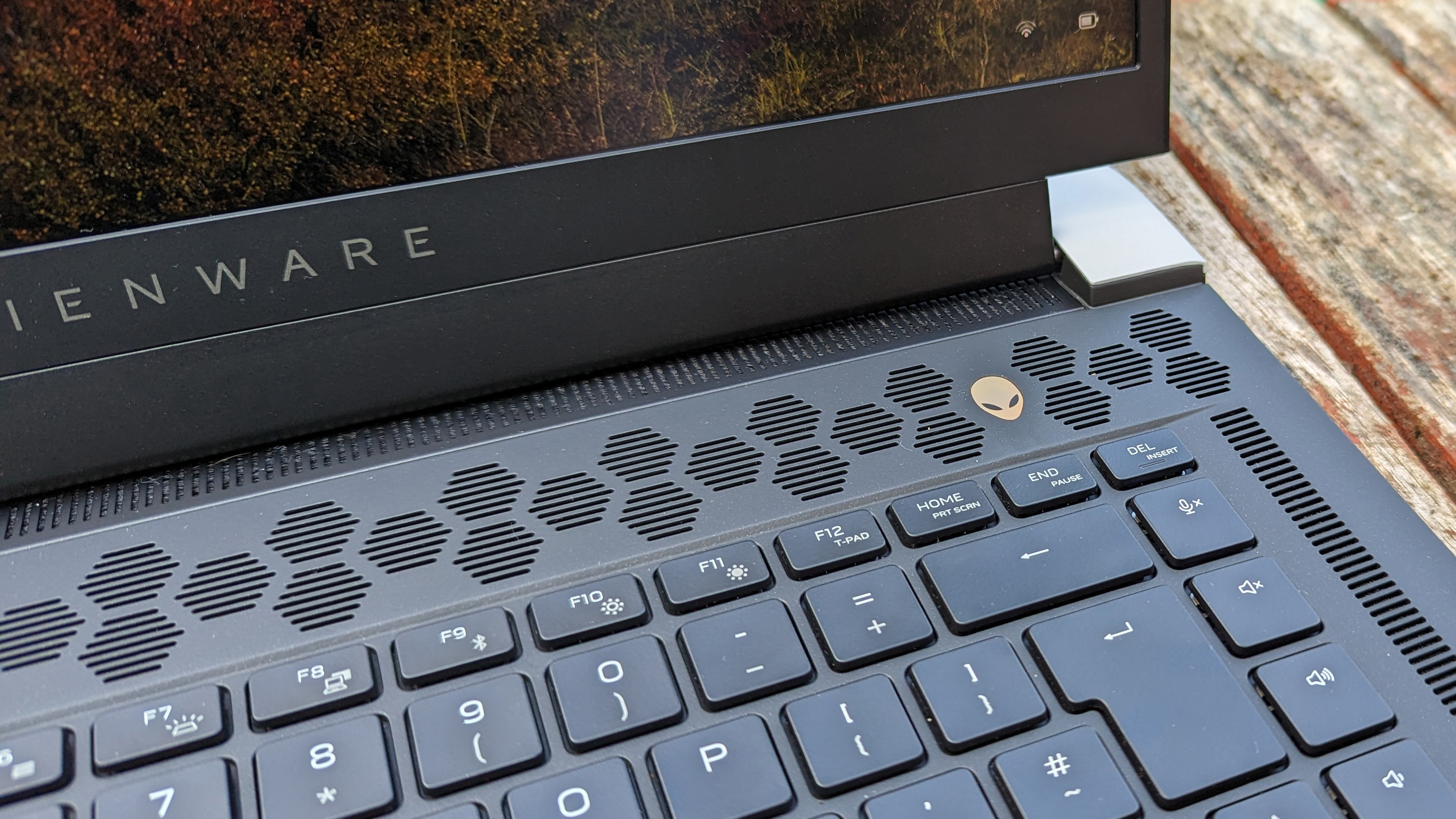
Design
The rear light is a bright one, and can be customised or switched off using the Alienware software, but it does make you wonder why it’s there. Apart from casting a coloured light up the wall if you’re using it near one, or drawing attention to you when you have it on your lap, it seems to serve no purpose.
Alienware laptops have a distinctive look, with the hinge between the screen and keyboard slightly less wide than the rest of the body. This gives the impression that the laptop has a neck, and that the screen is its head. The laptop’s body also projects back behind the screen, meaning this will never be able to fold back on itself or do the kind of hinge-based gymnastics some models are capable of, but it also doesn’t have a touchscreen so you’re less likely to try.
Our review model is clad in an off-white, light grey kind of plastic. We’re not sure if it’s bone, eggshell, or pale nimbus white, but the accents are black and it even has a watermark in the form of a stylised rectangular 15. The bezel around the screen is fairly thin, but the webcam that lives there is a disappointing 720p model.
All the machine’s ports are at the back, an unusual design choice that we almost approve of from a convenience point of view but which has a major drawback, which we’ll come to soon. There are a pair of USB Type-C ports, one of which is Thunderbolt enabled and one which isn’t, a single USB Type-A, an HDMI 2.1 for if you’ve got a high-res monitor or TV to hook it up to, and a Micro SD port, which is a really nice touch despite the decent 1TB SSD the laptop is equipped with (up to an astonishing 8TB is available, two 4TB drives in a RAID 0 array, if you’re prepared to pay for it).
As a gaming laptop, the X15 comes with the kind of lighting previously seen at Blackpool during the festive season, the keyboard flashes rainbow colours when you switch it on and the alien head logo glows on the rear of the lid. There's also another light that highlights the rim around the rear panel of the laptop where the ports are, and this one has a serious flaw. The panel is black, the ports slightly recessed, and each has an identifier next to them printed in very dark grey. It’s hard to read in the sunshine, and when the surrounding light is on it becomes utterly impossible.
This isn’t a problem for most of the ports, as you can tell an HDMI from a USB Type-A from a Micro SD card reader by looking at them. But it matters for the USB-C ports, one of which is Thunderbolt enabled, one of which has a DisplayPort symbol next to it, and telling them apart could make the difference between a monitor working or an external drive transferring at full speed. Much squinting and holding the laptop up to the light may ensue.
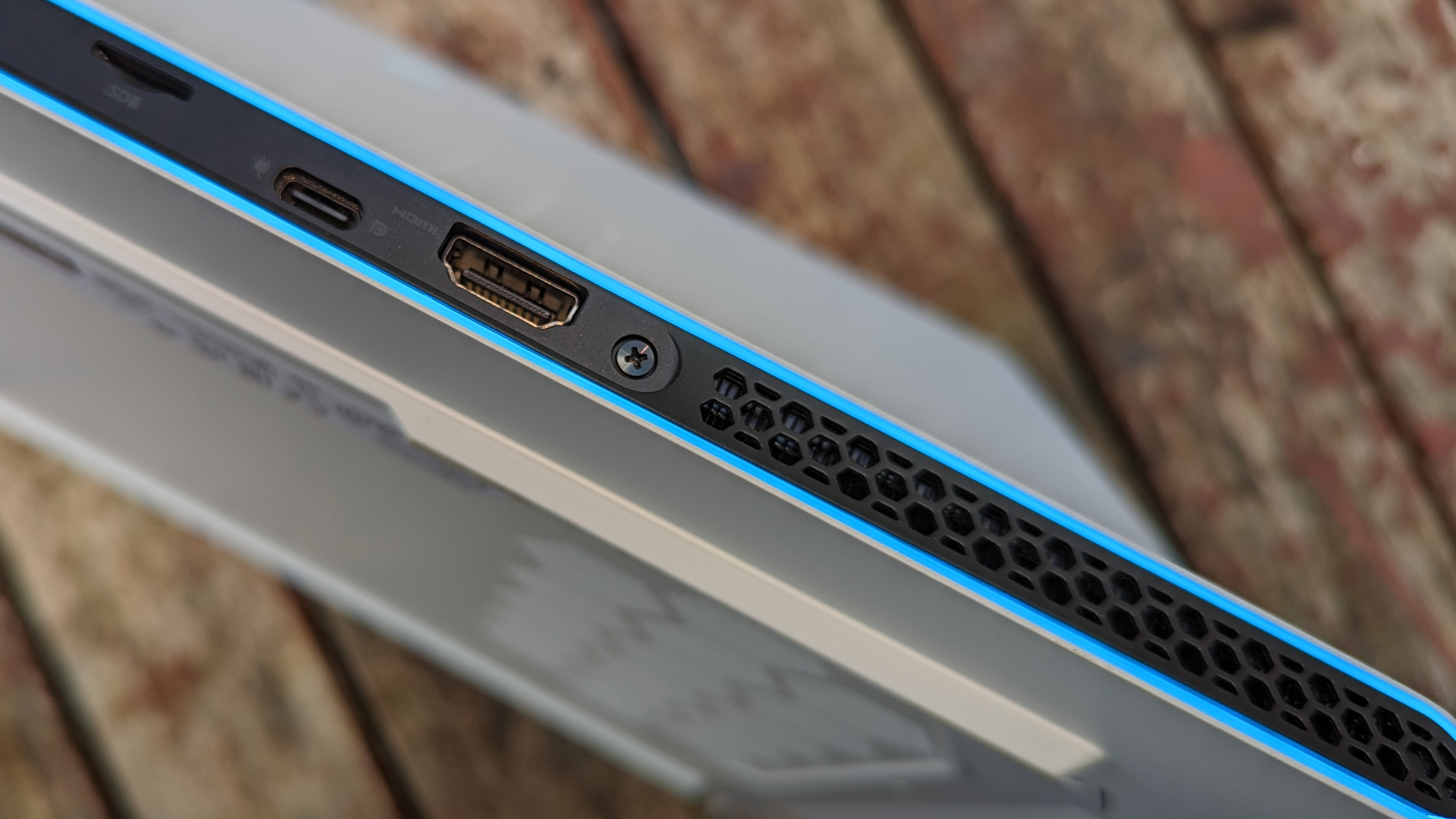
Features
The lighting extends to the keyboard as you’d expect, and the Alienware logo that acts as an on-switch cycles between cyan and yellow at its default setting. We’d have liked to have seen some magenta thrown in to complete the set, but then perhaps we’re just weird. The keys have some travel, are nicely spaced, and don't do anything too ridiculous with the layout, though the row of media keys we’re used to seeing at the top is now on the right, meaning you might clip the volume adjustment when reaching for Return. It’s a reasonable place to do some typing.
The trackpad is a bit of a disappointment, being much smaller than that on other laptops we’ve tested, and not feeling like it has a coating of smooth warm ice like the best on the market. It’s perfectly responsive and accurate, positioned slightly to the left of the chassis directly under the spacebar, just a bit small. Given the laptop’s target audience, it’s likely the use of an external mouse is expected.
Inside, this is a powerful machine that makes good use of some of the finest chips from the Intel and Nvidia stables. The CPU, an i7-12700H (an i9 is also available), has 14 cores split into six performance and eight efficiency, for a total of 20 simultaneous threads. The 32GB of RAM in our review sample is DDR5 in a quad-channel arrangement for a little extra throughput, while the GeForce RTX 3080Ti GPU has 16GGB of its own. It comes with gaming drivers installed, but these could be quickly exchanged for the Studio version if wanted.
Having a 1080p screen on a laptop with such a powerful graphics chip seems like an anomaly. It could easily push something with more pixels, but perhaps that’s what the HDMI 2.1 port is for. This version of the spec is capable of 8K/60 or 4K/120, while the built-in screen is capable of a refresh rate of 165Hz, pointing toward the kind of esport titles that demand a high framerate and quick reflexes while retaining the option to slow it down and play more graphically intensive titles on a larger screen.
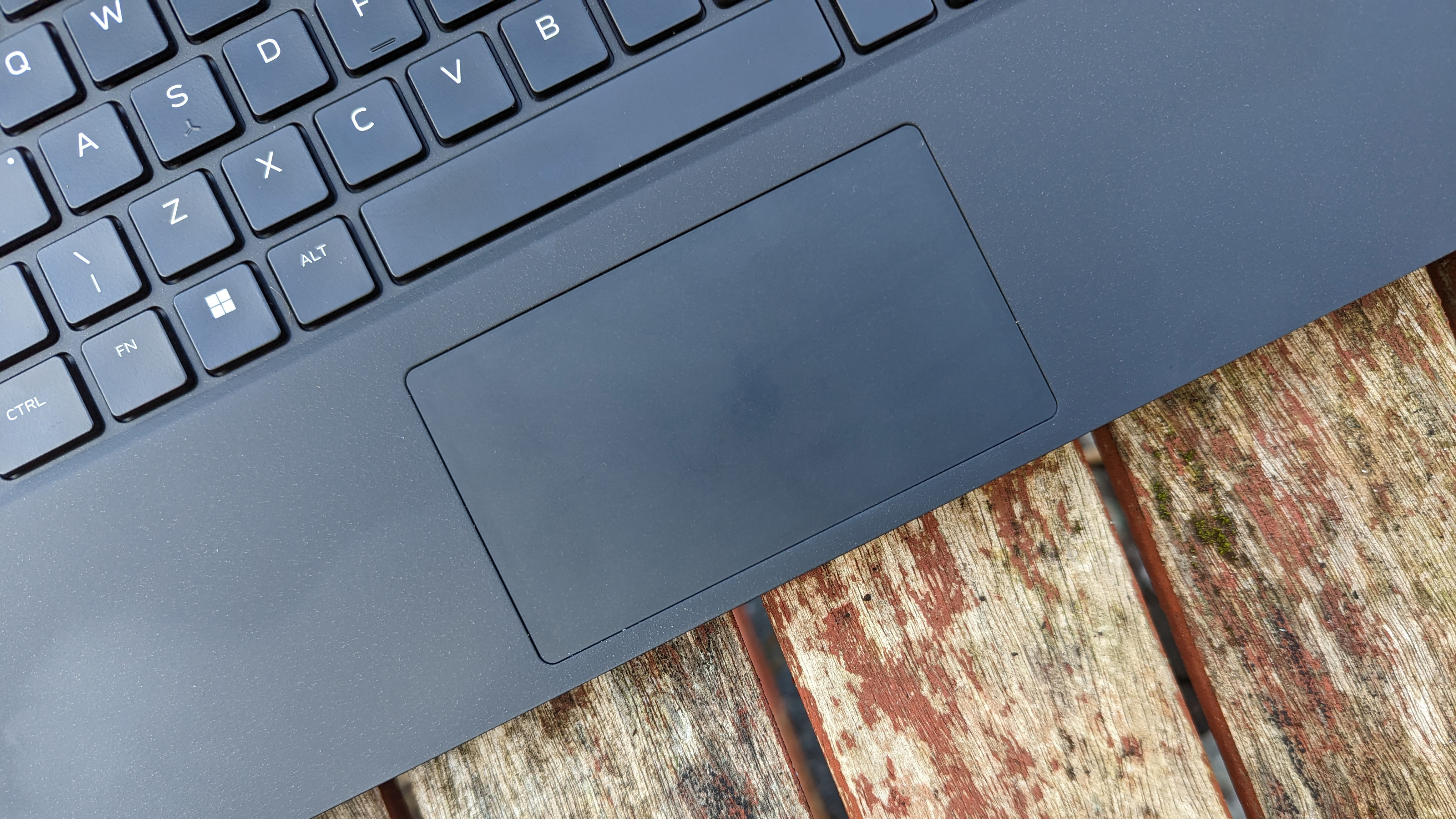
Performance
Cinebench R23
Single-core: 1,686 pts
Multi-core: 10,257 pts
PC Mark 10: 6,012
Battery: 3hrs 48m
Geekbench 6 CPU:
Single-core: 2,077
Multi-core: 12,076
GPU: 128,580
Handbrake: 04:33
The maximum turbo frequency of the i7 CPU is 4.7GHz, making it a snappy performer within Windows as well as most applications. While we’ve seen even hotter i9 processors in laptops, the i7 is a good choice for portable power, as it has the grunt to get jobs done without requiring an industrial cooling system.
Having 32GB of RAM - something that only the most demanding of games will even begin to use - means it’s a great choice for extreme multitasking as well, being able to flip between InDesign and Photoshop without needing to wait for an app to be restored from virtual memory. Office documents and browsers are, as you’d expect, no problem whatsoever, while design work, image editing and video work aren’t outside the laptop’s scope, though that 1080p screen may prompt users to invest in a larger, higher resolution external monitor.
The GPU in our review unit is the RTX 3080Ti, a strong choice from Nvidia’s outgoing generation of chips that’s still extremely capable. Running the latest games at 1080p is well within its capabilities, though gamers in search of improved experiences will want that external monitor too.
All these choice components need something to dissipate their heat, and there are vents all around the Alienware’s body, including all the way down the sides where the ports usually are. The fan itself is quite active, particularly when gaming or transcoding video, but coming on even when using a web browser, but makes a soft sound that easily blends into the background.
The laptop is finicky about chargers, having a dedicated port for the bundled Dell-branded power brick but also taking power refills over USB-C. Plugging in a 20W tablet charger capable of charging other laptops gave a ‘this charger is undersized’ warning in Windows (though the charger was really no smaller than many others), and on startup produced a screen demanding a 240W adapter be connected.
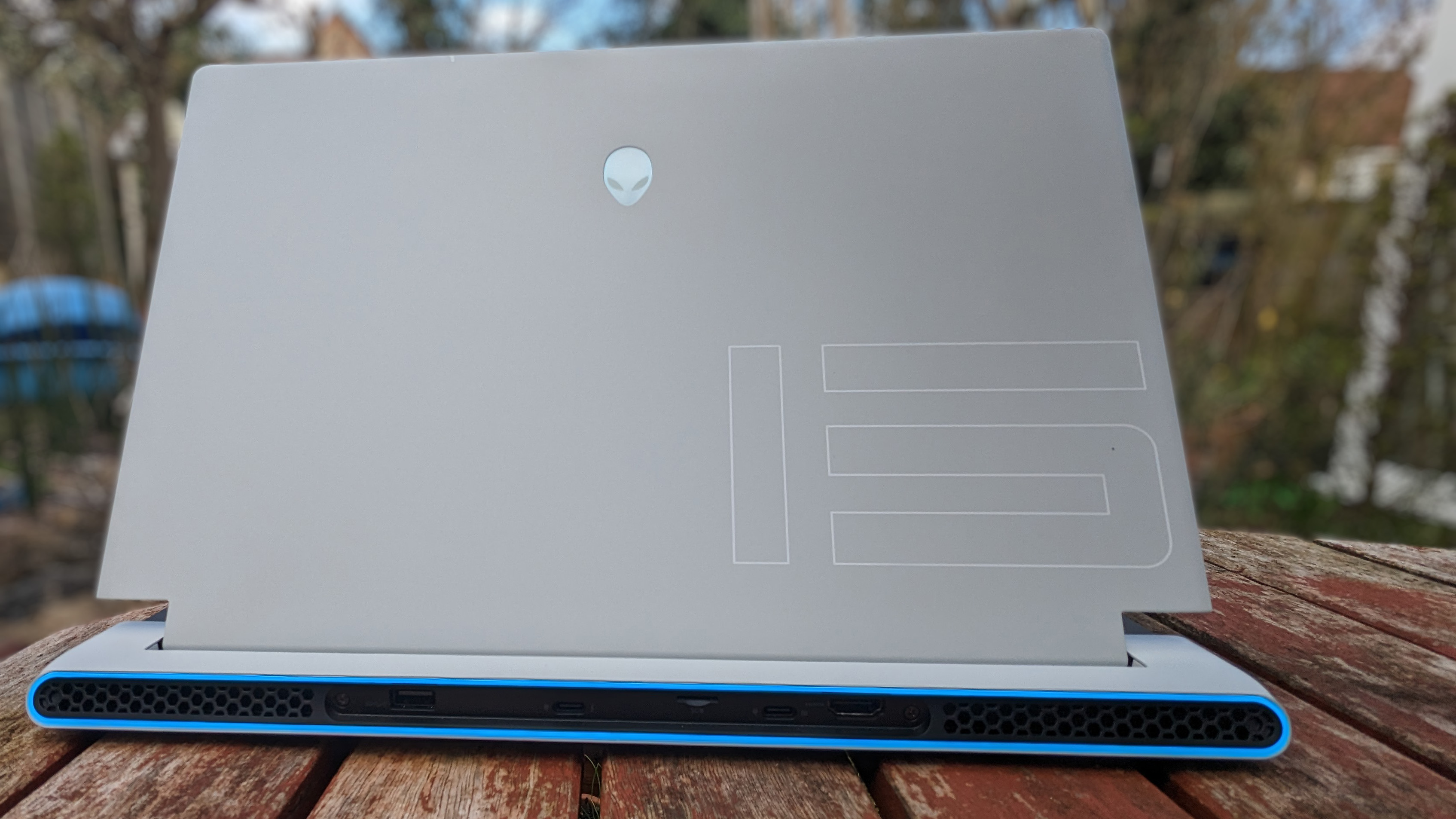
Should I buy the Alienware X15 R2?
Having the ability to flip between games and serious work is a major benefit in a laptop, and certainly beats having one computer for work and another for play. The Alienware X15 R2 would make a fine addition to any desk, as long as you’re prepared to put up with the lighting and have a higher-res monitor to hook it up to in order to make the most of its pixel-pushing potential.
At more than £2000, whether it represents good value for money is a different question, as it shares a marketplace with the MSI Creator Z17 and ASUS ROG Zephyrus M16 which are also powerful, expensive beasts, and you can pick up a 14in M2 MacBook Pro for around the same cost. The Alienware has its looks and a long gaming pedigree to fall back on, but despite being an excellent laptop, it’s far from the only game in town.







